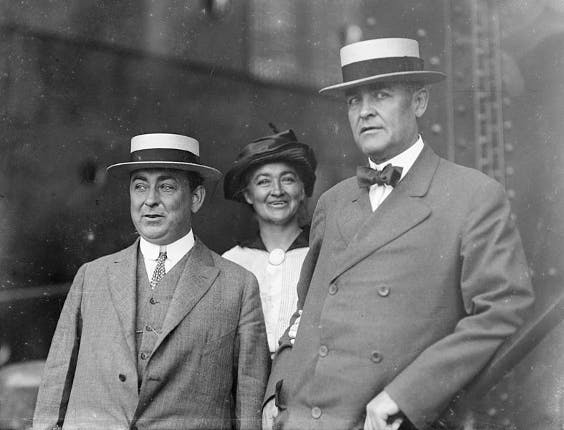Sullivan’s Follies, III: What ‘Shall Issue’ Could Look Like in New York
Second Amendment rights activists contend that allowing more New Yorkers to carry guns would have little effect, arguing that the current regime inhibits only law-abiding citizens from carrying guns.

“Sullivan’s Law, which is in many ways the model of gun control, is extremely effective at keeping crime guns from being sold in New York,” the president of the Citizens Crime Commission, Richard Aborn, tells The New York Sun.
While New Yorkers await the Supreme Court’s decision on the state’s Sullivan Law that strictly limits handgun ownership, a debate has erupted on what deregulation could mean.
Second Amendment rights activists contend that allowing more New Yorkers to carry guns would have little effect, arguing that the current regime inhibits only law-abiding citizens from carrying guns.
Gun control advocates contend that deregulation would lead to guns being used for more shootings, murders, and suicides as well as being involved in more accidents.
Mr. Aborn is a longtime gun control advocate who, during President Clinton’s first term, was a strategist behind the passage of the Brady Bill, which imposed a waiting time on handgun purchases, and the federal assault weapons ban.
“I think you’ll see the levels of violence go up because people will be carrying concealed guns and bringing them into tense situations. At least now we can stop the possession of illegal guns,” Mr. Aborn said. “You have to see how the court rules.”
The National Rifle Association points out that an end to the Sullivan Act would only affect “law-abiding gun owners,” allowing New Yorkers to legally carry handguns for the purpose of self-protection.
“New York’s concealed-carry-licensing regime has proven itself to be arbitrary, oppressive, and even corrupt,” an NRA spokesman, Lars Dalseide, tells the Sun. “We’re asking the Court to remove those restrictions so the basic right of self-protection can be exercised.”
One of the biggest challenges in this case is finding reliable data on the relationship between gun regulation and gun deaths. Although other government agencies keep data on the subject, the FBI’s Uniform Crime Reports provide the most detailed information.
According to the FBI, New York had a rate of 1.53 murders with a firearm per 100,000 in 2019. While gun control advocates often credit that low mortality rate to tight restrictions, there are counter examples.
For comparison, neighboring Vermont, a Constitutional Carry state with little regulation on firearms, had a rate of 1.28 murders with a firearm per 100,000 residents.
According to FBI data, the state maintains a consistently low murder rate compared to other states.
Missouri, which repealed its permit-to-purchase handgun restriction in 2007, offers a cautionary tale, as gun control advocates see it.
Between 2007 and 2008 Missouri saw its rate of murder with a firearm increase to 5.86 per 100,000 from 4.18 per 100,000, according to the FBI’s Uniform Crime Reports.
An economist and gun policy researcher, John Lott, told the Sun he was skeptical of attributing any rise in the rate of homicides — with a handgun or otherwise — to the expansion of concealed carry, saying “permit holders tend to be extremely law abiding,” with low arrest rates for firearm-related offenses.
The District of Columbia provides an inconvenient example for advocates of gun control. In 2019 the district had 19.20 murders per 100,000 people in spite of its strict gun control laws.
Mr. Lott predicted that a more liberal concealed carry law would make New Yorkers safer if the state made it easy to acquire a permit.
“Not only does the cost affect the number of people who get permits but it has a very important effect on the type of people who get concealed carry permits,” Mr. Lott said.
He argued that an expansion of concealed carry, without the implementation of prohibitive fees, would benefit poorer, mainly black communities in New York’s cities as a deterrent to crime.
One analysis of a collection of studies by the Rand Corporation found that the effect of shall-issue laws on violent crime is largely inconclusive, with “limited” evidence suggesting that “shall-issue concealed-carry laws may increase violent crime.”
Specific to New York, a study, published in the Economic Journal in January 2022, found that the Sullivan Law’s effectiveness was relatively limited. The study found an initial reduction in gun violence that was later mitigated as people learned to circumnavigate the law.
“Our main analyses show no effects on overall homicide rates,” the study read.
The study did find a “reduction in overall suicide rates, and strong evidence of a large and sustained decrease in gun-related suicide rates.”
Ultimately, what happens in New York will largely depend on the ruling of the Supreme Court, which is expected before the court’s term ends in June or July.

